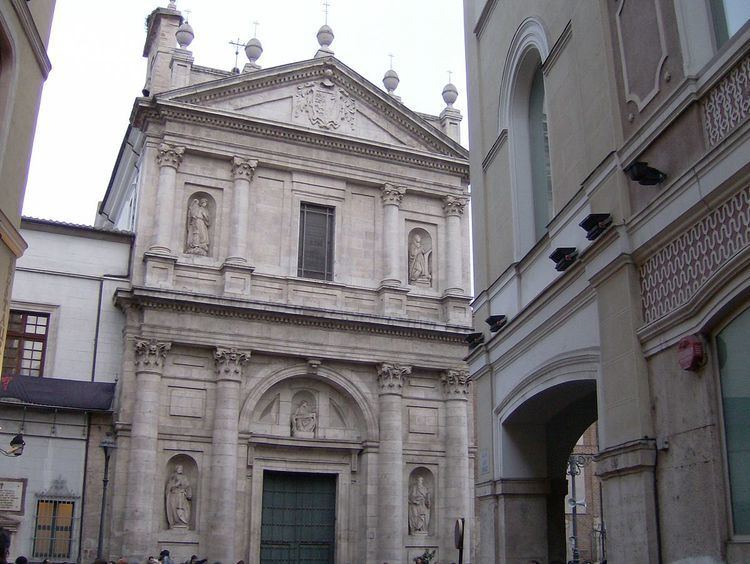 | ||
The Illustrious Penitential Brotherhood of Our Lady of Anguish is a Catholic fraternity established in Valladolid, Castile and León, Spain in 1536.
Contents
Mission
The brotherhood of the Virgin of Anguish has the mission of promoting the devotion to the Blessed Virgin Mary, mainly through the celebration of several Holy Week processions in the city. The members of the brotherhood celebrate several masses as well, following the Estatutos o constitutions of the own association and the liturgic calendar of the Roman Catholic Church. Any baptized catholic individual can became a member; however, family tradition is very important to belong to the Anguish.
History
The earliest document preserved that proves the antiquity of the Brotherhood dates from 1569. In this document there are references to a papal bull from Pope Paulus III given in 1536. Historically, the brotherhood has claimed older origins, linked with queen Isabella I of Castile, without documental prove.
The image of the Virgin of the Anguish by artist Juan de Juni was carved in 1561 and became the main piece of devotion of the brothers and eventually of the entire city.
The brotherhood first built a chapel in the location of actual Torrecilla street. By 1613 the brothers decided to build a new church since the original chapel was almost ruined. Since its construction to the present day, the Church of the Anghish has been the headquarters of the brootherhood. During the 16th and 17th centuries, the Anguish run a hospital according to its foundational mission: assist the needy.
In the 17th century Valladolid experienced a brilliant artistic period. The Catholic church and the Penitent brotherhoods commissioned important art works for the churches and penance processions. The Anguish Brotherhood commissioned pasos to artist such as Francisco del Rincón and Gregorio Fernández.
The 19th century was a period of decadence in the celebration of Holy Week in Valladolid. Many pasos were abandoned and the parades lost its former splendour. The Anguish brotherhood experience the same process but the devotion for the image of Mary remained as an important local devotion.
Archbishop Remigio Gandaségui restored the processions in Valladolid in 1920 collaboration with the National Museum of Sculpture where most of the pasos had been preserved.
The 3rd of October, 2009, the image of the virgin of Anguish was canonically crowned by archibishop Braulio Plaza
